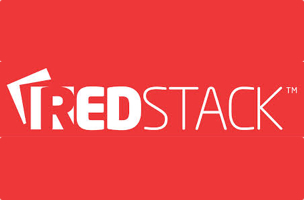Finds unexpected work guiding customers through UAV regulations.
Redstack, whose headquarters are in North Adelaide, South Australia, provided consulting services for CAD software as part of the IMAGINiT Technology Group before heading out on their own. “Last year, about 18 months ago, the company was bought out in Australia and we set up our own brand,” Redstack marketing specialist Robert Fischer told me, “with our core focus still on that Autodesk CAD technology, but we’re looking to diversify the business into complimentary technologies.”
Branching out into these cutting-edge new technologies has taken the company into some unexpected directions, including partnerships with Apple and Makerbot. It has also helped to cement their relationships with other local companies in South Australia, like Maptek, who produces 3D scanners for the mining industry, and Avitus, who produces UAVs.
Fischer says the company sees the new partnerships as a way to extend their services and help customers solve more kinds of problems. “We’re looking at delivering complete end-to-end 3D solutions. From the reality capture side, with your UAVs and cameras and 3D scanners, being able to capture existing information, then utilize the Autodesk software to do the 3D modeling, either from scratch or using the data you captured. Being able to completely design with something like simulation technology, and software that is used in the build or construction process right through to being able to print out your own model of that design.”
Though the adoption of 3D printing among Redstack’s customers has been a little slower than they had hoped for, the Makerbots have proved unexpectedly useful with the UAV portion of their business. “Being a customized solution,” Fischer told me, “in our partnership with Avitus, we’ve been buying a kit and doing our own modifications. So we’ve been looking at 3D printing things like guards for the propellers and bits and pieces like that.”
UAVs, in fact, look like they might become a cornerstone of Redstack’s business, as the technology is creating a secondary service industry in Australia. This is due, in no small part, to the complexities and expense of the regulatory process. “The regulation is a big thing,” says Fischer, “the licensing and being able to get through all of that is quite restrictive. People are learning fairly quickly that they either need to stay away from it, or they need to work with someone who can manage all that, someone like us who understands what is required to get that licensing and can guide them through that process. So its creating more services work.”
The other challenge Redstack’s customers face when they decide to use UAVs? Too many choices and not enough expertise. “There are so many options out there on the market,” Fischer says, “and trying to figure out which UAV is going to be best for your purpose and what camera to use with it, and that sort of stuff gets very technical and you really need some research and expertise to figure out what’s going to be best for you.”
As technologies develop quickly and expand in ways no one could have expected a few years ago, it can be difficult to stay current or to make the right capital investments. Redstack has decided to solve that problem for their customers through a consultative approach–someone comes to them with a project, and the company helps select the best hardware or software for the project and guide them through the regulatory process as necessary.
“Now we’ve taken to producing end-to-end solutions for peoples’ problems rather than just being a software supplier,” Fischer explained. “So we’re just looking at adding these new technologies and using the same approach to extend our offering.”






